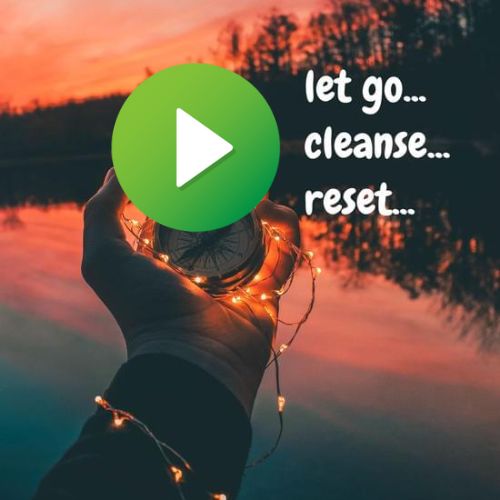Yoga Breathing Exercises for Air Pollution – explained in Detail: Diwali Festival has come and gone. Leaving you with a thick envelope of smog and hazardous air quality in Delhi, Gurugram, Noida, Faridabad, Ghaziabad and other neighbouring states. There is a huge amount of speculation on the reasons for the rise in Air Pollution.
The biggest question is – what is the alternative to Breathing in every time you inhale the toxic air. Well, since you do have to breathe to stay alive – breathing exercises for air pollution as per Yoga is the answer to your question. Yoga is known to increase your lung capacity and keeps toxins from invading your body – How?
3 Yoga Breathing Exercises to Combat Air Pollution
Due to Yoga Breathing – you tend to use respiratory muscles in the chest, abdomen and collarbone (clavicle). It helps you use your lungs to their maximum capacity. Thus, breathing exercises for air pollution increases the oxygen intake by all the cells in your body.
As per Denzil Oconnell, International Certified Yoga Instructor, three Breathing Exercises for air pollution are most useful to reduce the adverse effects on your lungs and brain. Denzil says breathing exercises are essential to cleanse your nadis, respiratory system and overall health. (“NADIS are energy channels through which PRĀNA – divine energy, life and consciousness – streams. Within the human body, there is a subtle and perfect network of 72,000 Nādīs that distribute this life force throughout the whole body).”
First: Breathing Exercise for air pollution
1. HOW TO DO abdominal Breathing or diaphragmatic BREATHING (KAPALABHATI)
The easiest of all breathing exercises for air pollution is the simple Yoga breathing exercise called Kapalbhati (Skull shinning).
It increases your lung capacity by pulling them down towards the abdominal cavity when relax and let the diaphragm to descend downwards. This breathing exercise cleanses your respiratory system and nasal passage. It also removes any spasm in the bronchial tubes. By practising it over a period of time you can bring relief and cure asthma. Carbon Dioxide is eliminated and your system absorbs more oxygen. It is known to be the VERY BEST breathing exercise for air pollution to increase oxygen in the system.
Kapalbhati breathing vibrates every tissue in the body. Always practise this breathing exercise in the Lotus position to make it easier for you to stay in the position.

Step 1
Sit in a cross-legged (Lotus Pose) position comfortably with your back straight and erect. Place your hands on your knees in Gyan Mudra (the tip of the thumb and the index finger are joint, while the other three fingers are stretched out). Also, make sure your back and shoulders do not move and are always erect. Keep your face relaxed as well. Take a big and deep breath in. Feel the air till it fills up your lungs.
How to sit during Meditation?
Step 2
Soon after, as you exhale out through the nose, contract your stomach muscles in towards the spine. Stretch as much as you comfortably can. When you begin to relax your abdomen, your breath will automatically flow into your lungs. Take 15-20 expulsions of breaths to complete one round of Skull Shining Breathing Kapalabhati. After completing the round, relax your body with your eyes closed and feel the sensations in your body.
Practice one round with 15 expulsions for beginners. You could practise 3 rounds of 15 expulsions in each round before you start other breathing exercises (Pranayama). Practise it twice each day morning and evening.
TIPS:
- The exhalation technique is forceful so, just throw out your breath.
- Focus on exhalation. Don’t worry about the inhalation. It will happen naturally as you relax your abdominal muscles.
- Practice this on an empty stomach.
How to do Kapalabhati Pranayama and its Benefits in Yoga – Skull Shining Techniques
Second: Breathing Exercise for air pollution
2. Alternate Nostril Breathing (Anuloma Viloma)
There is no other breathing exercise for air pollution as good as alternate nostril breathing as it purifies the Nadis. The other Yoga breathing exercises bhastrika brings the best results only after the nadis get purified.
Alternate Nostril Breathing (Anuloma Viloma) is performed with a breathing sequence of 1:4:2 ratio. In the same manner, practice your breathing to a count of 4. Breathe in for 4 counts, hold it for 16 and exhale for 8 counts.
For beginners, you can start with multiplications of 4. Always, remember the pose starts and ends on the left side.

Mentioned below are the steps on how to perform Alternate Nostril Breathing (Anuloma Viloma):
Step 1
Sit in a cross-legged position with your spine straight and shoulders relaxed. Raise your right hand and bring your fingers into Vishnu Mudra by folding the index and middle finger under the base of the thumb. Inhale completely through the left nostril for a count of 4, while keeping the right nostril closed by your thumb. Close the left nostril with the two ends of your ring and little fingers so that both the nostrils are closed. Hold this to the count of 16.
Step 2
Release the right nostril and exhale out to the count of 8. Inhale fully through the right nostril to the count of 4. Close both the nostrils and retain the breath to the count of 16. Release the left nostril and exhale out to the count of 8. This is one round of Alternate Nostril Breathing (Anuloma Viloma).
You must do at least 10 rounds daily.
Once you feel comfortable practising this asana, you can increase the rounds and the count to the ratio of 1:4:2. This means for every second you inhale; you retain the breath 4 times as long and exhale for twice as long. Therefore, you must never change the ratio of the count.
Tips:
Inhale the air through your left nostril while counting Om 4 times mentally. Retain the air and count Om 16 times mentally. Exhale through the right nostril and while counting Om eight times.
https://wellnessworks.in/alternate-nostril-breathing-steps-benefits-science-wellnessworks/
Third: Breathing Exercise for air pollution
3. How to do Bhastrika – Breathing Exercise
Often you may think that Kapalbhati (First Breathing Exercise) and Bhastrika are similar. In Kapalbhati – you use only the diaphragm. However, in Bhastrika apart from your diaphragm – your entire respiratory system is brought to play. Bhastrika breathing exercise relieves inflammation of the throat, destroys phlegm, cures diseases of the chest and nose, removes asthma to name a few. Any disease due to phlegm, bile or wind is removed by bhastrika alone. It also purifies the Nadis.
Step1:
Sit cross-legged in the Lotus Pose. If you are uncomfortable sitting in this posture sit on a chair with your knees at 90 degrees with feet firmly on the floor. Practise inhaling and exhaling rapidly. Make sure you start with ten rapid expulsions of the breath.
Step 2:
As soon as you end the last expulsion – inhale with the deepest inhalation possible. Then, inhale and suspend the breath for as long as possible – that too comfortably. And, exhale through the left nostril.
Start bhastrika with 10 expulsions and slowly and gradually increase them to 30 in each round. You could start with three rounds and go up to eight rounds. Try and never overdo this breathing exercise for air pollution. The number of rounds is to be determined by each individuals strength and capacity.
After you practise the above 3 breathing exercises for air pollution – if you are able to take out time for further practise – follow the easy and simple 12 Meditation Steps by clicking here. Check out other respiratory yoga exercises on our website www.wellnessworks.in
The above article helps you answer the frequently asked questions:
Is Delhi safe to breathe?
How we keep our lungs healthy in Delhi?
Which yoga is best for lungs?
What is the best pranayama?
Read More:
How to Cure Asthma by removing sadness in your life
How to Houseplants purify the air in the environment
5 Tips to practise Yoga while Traveling
6 Tips and Precautions During Festival for Safety
Which Pollution mask to Choose and How – for air pollution
12 Steps on How to do Meditation for Beginners – By Swami Sivananda








